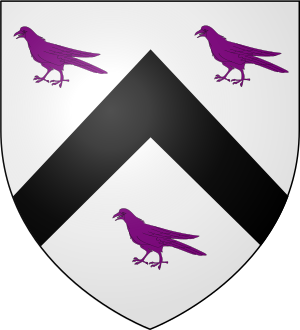Rhys ap Gruffydd (rebel) facts for kids
Rhys ap Gruffydd (born 1508, died December 1531) was an important landowner in Wales. He was accused of planning to rebel against King Henry VIII. People claimed he was working with James V of Scotland to become the Prince of Wales. Because of these accusations, he was put to death. Rhys married Lady Catherine Howard. She was the daughter of Thomas Howard, 2nd Duke of Norfolk.
Rhys's Early Life
Rhys ap Gruffydd was the grandson of Rhys ap Thomas. His grandfather was a very powerful man in Wales. He was also a close friend and supporter of King Henry VIII.
Rhys's father, Gruffydd ap Rhys ap Thomas, passed away in 1521. This meant Rhys became the main heir to his grandfather's lands and titles. In 1524, Rhys married Catherine Howard. She was the daughter of a powerful English nobleman, Thomas Howard, 2nd Duke of Norfolk.
When his grandfather died in 1525, Rhys expected to take over all his important positions. However, King Henry VIII gave many of these important roles to another nobleman. This was Walter Devereux, Lord Ferrers. This decision led to a big disagreement, or feud, between Rhys and Ferrers. This feud grew more serious over the next few years.
Conflict with Lord Ferrers
Rhys wanted to increase his power and standing in Wales. He asked Cardinal Thomas Wolsey to give him various important jobs. The chance for conflict with Ferrers grew when both men were allowed to have more armed followers. This led to different groups of armed men supporting each leader.
The bad feelings between Rhys and Ferrers became very tense in June 1529. This happened when Ferrers showed off his power during preparations for a big court meeting. Rhys, surrounded by about forty armed men, threatened Ferrers with a knife. Rhys was then arrested and put in Carmarthen Castle.
Rhys's wife, Catherine, made the situation worse. She gathered hundreds of her supporters and attacked the castle. She later threatened Ferrers himself with an armed group. In the fighting between the two sides, some of Ferrers's men were killed. These groups continued to cause problems for months. This included street fights and acts of piracy (stealing from ships).
Accusations of Treason
Because of his supporters' actions, Rhys was moved to a prison in London in 1531. By this time, King Henry VIII claimed that Rhys was trying to overthrow his government in Wales. Rhys had started using the title "Fitz-Urien." This referred to Urien, an ancient Welsh ruler with mythical importance.
Rhys's accusers claimed that using this title was an attempt to say he was the Prince of Wales. They also said he was planning with James V of Scotland to remove Henry from power. They claimed this was to fulfill old Welsh prophecies.
Rhys was found guilty of treason (betraying his country). He was put to death in December 1531. Many people were upset by his execution. They openly said that he was innocent. However, a writer from that time, Ellis Gruffudd, believed that the Rhys family's pride had caused their downfall. He wrote that "many men regarded his death as Divine retribution for the falsehoods of his ancestors, his grandfather, and great-grandfather, and for their oppressions and wrongs."
Historian Ralph Griffith believes that Rhys's execution was a "judicial murder." This means it was a legal killing based on charges made up to fit the political situation. He suggests that Rhys became one of the first "martyrs" of the English Reformation. This was a time when England broke away from the Roman Catholic Church. Rhys was thought to be against this change. He had also spoken negatively about Anne Boleyn, who Henry VIII wanted to marry. Rhys had been friendly with Katherine of Aragon (Henry's first wife) and Cardinal Wolsey. Getting rid of Rhys helped Henry prepare for the Reformation. Rhys's execution led to fears of a Welsh rebellion.
Rhys's Family
After Rhys's death, his many lands and possessions were taken by the King. His children became known by the English last name "Rice." His son, Griffith Rice (born around 1530, died 1584), later got back some of the family's lands. This happened during the reign of Queen Mary.
His daughter, Agnes Rice, had a well-known relationship with William Stourton, 7th Baron Stourton. After his death in 1548, she received much of the Stourton family's property. This was despite the rights of his wife and children. Agnes later married Sir Edward Baynton. She had children with both William and Edward.


